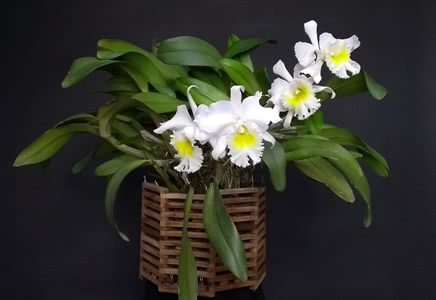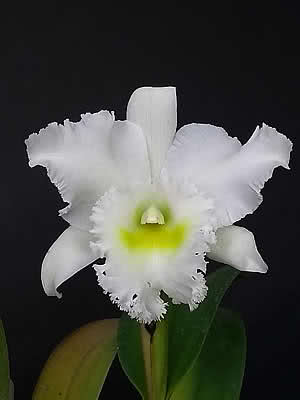A fascinating jewel in the world of orchids is the Brassocattleya Pastoral, a spectacular creation that blends art and science with beauty. Developed by the skilled Rolf Altenburg in 1961 at the Florália Orquidários Reunidos in Niterói (RJ), this stunning orchid is the result of meticulous crossbreeding among several notable species. The parent species include Cattleya trianei from Colombia, Cattleya mossiae from Venezuela, Rhyncholaelia digbyana found in Mexico, Belize, Guatemala, Honduras, and Costa Rica, Cattleya gaskelliana from Colombia and Venezuela, Cattleya warnerifrom from Brazil (specifically MG, ES, RJ, and BA), Cattleya dowiana from Costa Rica and Panama, Cattleya warscewiczii from Colombia, and Cattleya labiata also from Brazil (CE, AL, PE, PB).

Photo by Julio Cesar Zanatta
Brassocattleya orchids are a group of intergeneric hybrids, born from the union between the genera Brassavola and Cattleya This special hybrid, Bc. Pastoral, was named in homage to Beethoven’s 6th Symphony, composed in 1808, known as the Pastoral Symphony.
The Brassocattleya Pastoral is an epiphytic orchid with sympodial growth, meaning it grows on trees and has a growth mode where each new shoot develops next to the previous one. The parent species that gave rise to it grow in tropical forests and adapt to a wide range of altitudes, varying from 10 to 1,500 meters (about 33 to 4,921 feet). The spectacle of flowering occurs in the summer when the plant presents large fragrant flowers, measuring from 15 to 20 cm (about 5.9 to 7.9 inches) in diameter, and maintaining their beauty for about thirty days.
Each variety of Bc. Pastoral has its unique characteristics: the ‘Innocence’ displays flowers with white petals and sepals, highlighted by a small purple spot in the center of the white labellum. The ‘Ave Maria’, on the other hand, does not have this spot. The ‘Arniel Carnier’ has the end of the labellum in purple, while the ‘Pink Pearl’ appears in shades of pink, also with a purple spot in the center of the labellum. In all varieties, the interior of the tube is a vibrant yellow.

Photo by Julio Cesar Zanatta
To maintain the health and beauty of these orchids, some care is essential. They should be grown under filtered lighting, with 50% shading, in temperatures ranging from 5 to 35º C (about 41 to 95º F), and with relative humidity between 60 and 70%, always with moderate ventilation. The ideal substrate is perfectly drainable, such as a mix of macadamia or pine bark with 20% charcoal. Watering should be done on alternate days, always observing if the substrate is dry to avoid excess moisture and root rot.
Fertilization is another crucial step in caring for these orchids. The suggestion is to use weekly foliar fertilization with a solution of 2g (1 teaspoon) of NPK 20.20.20 fertilizer (Peter’s brand) per liter of water. If opting for daily fertilization, the amount of fertilizer should be divided by seven for each liter of water. It is important to be disciplined in the application: if one day is forgotten, the dose should not be doubled the next day to avoid plant salinization.
Organic fertilization of the substrate, done monthly with a teaspoon of organic fertilizer specifically for orchids, is also recommended. The propagation of Brassocattleya Pastoral is done through plant division, ensuring that each new plant has at least four healthy pseudobulbs, joined by the rhizome, and with intact roots. On a commercial scale, propagation is carried out through meristematic culture, performed in a laboratory.


